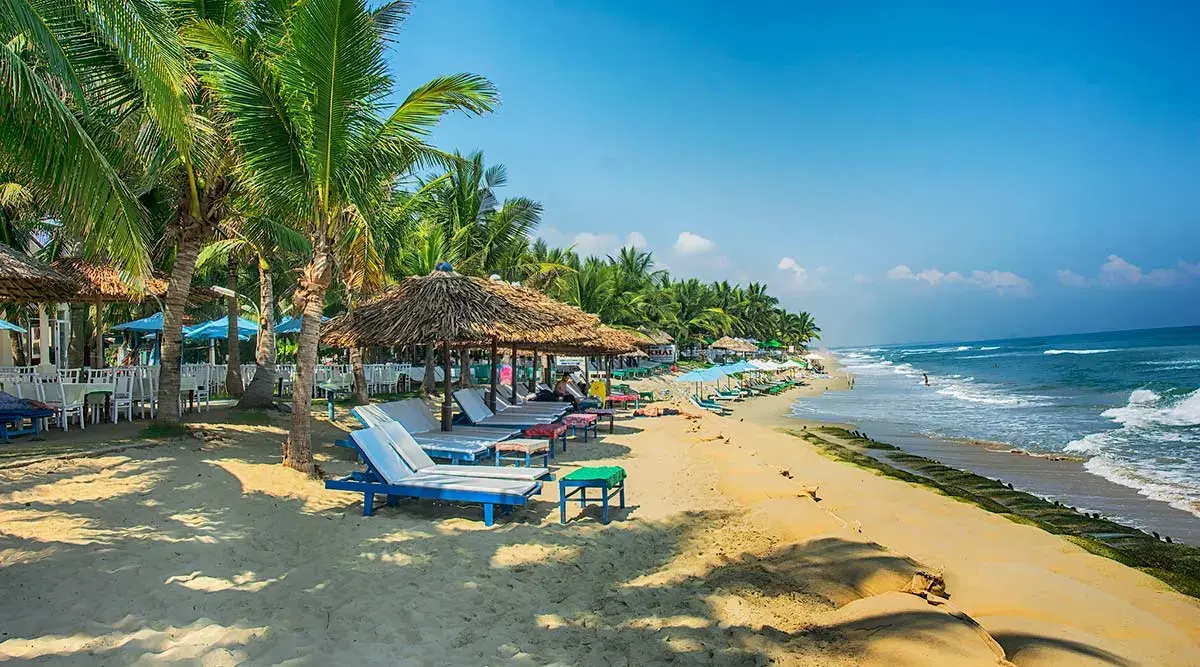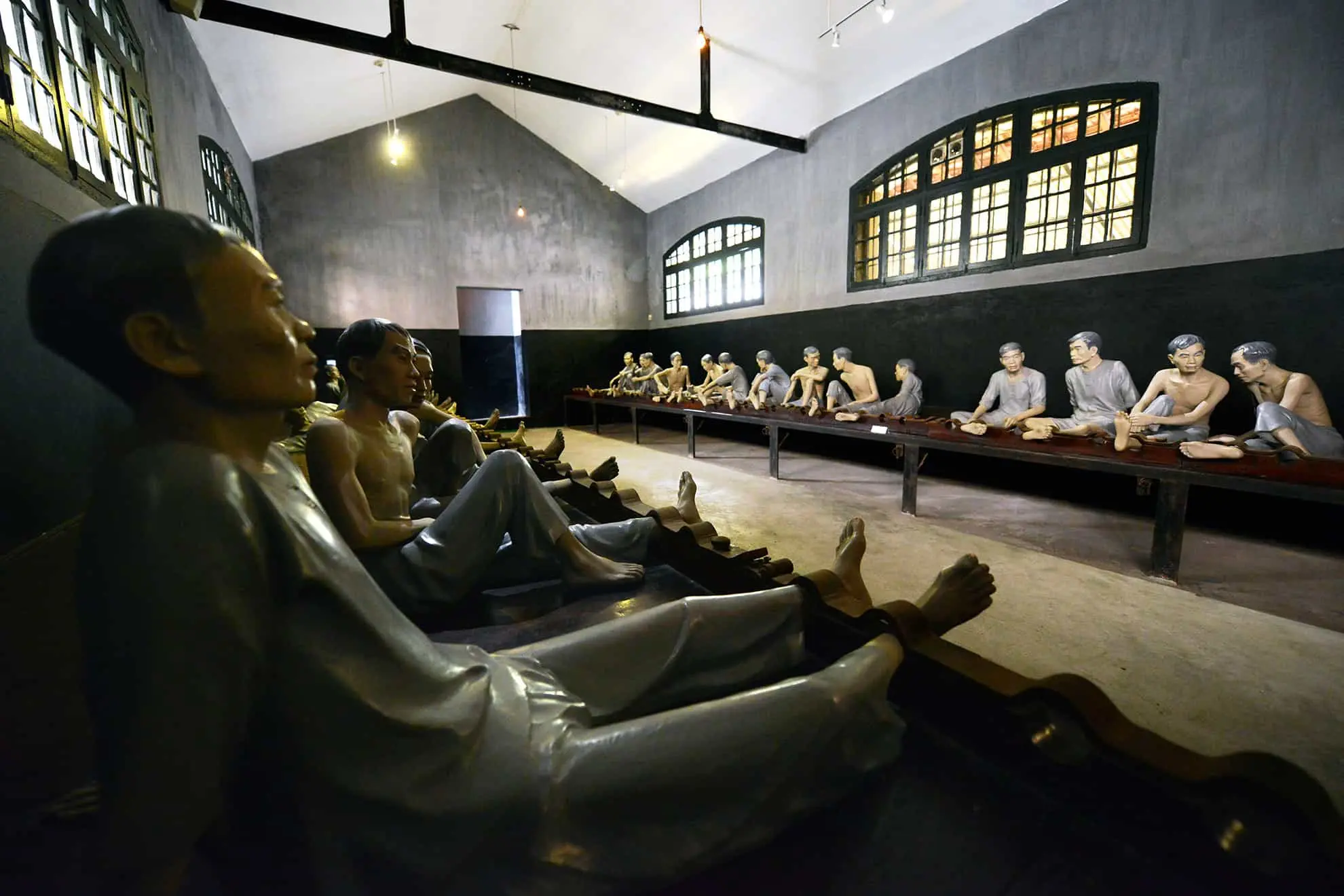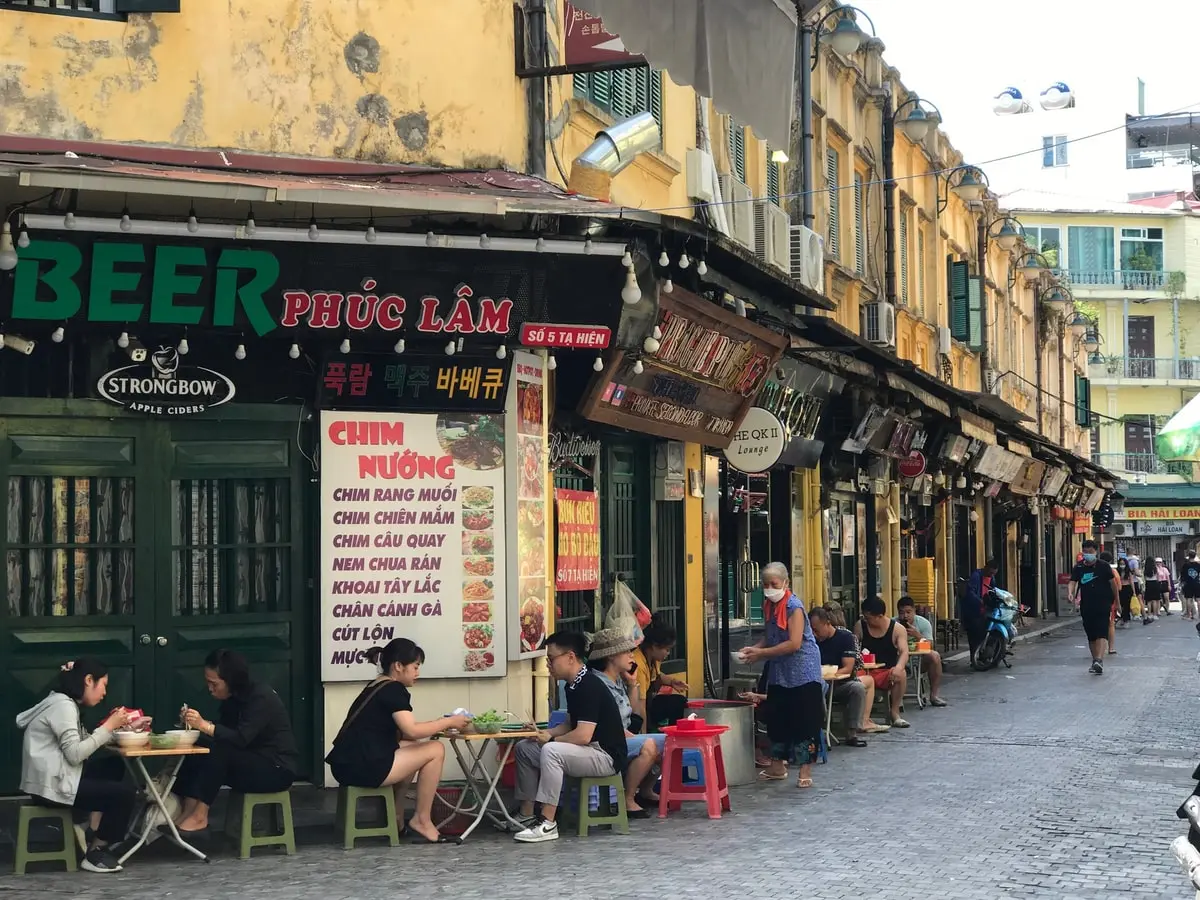Hoi An Vietnam waits for you. This city rests on the central coast. It offers a unique look into the past. EssentialVietNamtravel.com designed this guide. We want to help you explore Hoi An Ancient Town and its surroundings. Hoi An is more than just a place. It is an experience. It mixes history, culture, and natural beauty. This guide provides facts. It gives clear steps for your visit. We cover the famous Ancient Town, a UNESCO World Heritage Site.
We explore the Japanese Covered Bridge. We discuss the Thu Bon River and its lanterns. You will learn about Hoi An’s tailoring and food. We also provide practical travel information. Prepare to discover Hoi An, a gem located in Vietnam. It is a place that captures hearts. Many visitors return again and again. This town in Quang Nam Province offers much. Let us begin our journey into Hoi An.
Discover Hoi An Ancient Town: Vietnam’s UNESCO World Heritage Jewel
![]()
Hoi An Ancient Town represents the heart of Hoi An Vietnam. UNESCO recognized its importance. It named the town a World Heritage Site in 1999. This status highlights its exceptional preservation. The town showcases a Southeast Asian trading port from the 15th to 19th centuries. Walking through the Ancient Town feels like stepping back in time. The architecture tells stories. You see a blend of styles. Local Vietnamese designs mix with Chinese and Japanese influences. European touches are also present.
This fusion architecture reflects Hoi An’s history as a major international port. One defining feature is the Yellow Walls. Many buildings display this warm, ochre color. These yellow buildings create a distinct and photogenic atmosphere. The town plan remains largely unchanged. Narrow streets wind between old merchant houses, temples, and assembly halls. Many areas within the core Ancient Town operate as a Walking Zone. Motor vehicles are restricted during set hours.
This makes exploring on foot pleasant and safe. It allows you to appreciate the details without the bustle of traffic. Visiting the main monuments requires a ticket. You can buy the hoi an ancient town entrance fee ticket at various booths around the town. This ticket grants access to several key sites within the historical area. These sites include old houses, museums, assembly halls, and the Japanese Bridge. The funds support the ongoing preservation of this historical treasure. The Ancient Town is not just a museum. It is a living town.
People reside and work here. Shops sell crafts, souvenirs, and clothing. Restaurants offer local cuisine. This blend of history and daily life makes Hoi An Ancient Town a unique cultural tourism destination. It truly Is a city that has preserved its past while embracing the present. Visiting Hoi An Ancient Town offers a deep dive into Vietnamese History and Southeast Asian Architecture. It is a historical and cultural experience. EssentialVietNamtravel finds it a must-see location in Vietnam.
Cross the Iconic Japanese Covered Bridge in Hoi An’s Historic Heart

The Japanese Covered Bridge stands as a powerful symbol of Hoi An Vietnam. Often called Chua Cau, it is a Landmark recognized throughout the country and beyond. This bridge is unique. It features a temple built inside it, dedicated to a northern deity believed to control weather. Its presence highlights the multicultural history of Hoi An Ancient Town. The bridge construction dates back to the early 17th century. The Japanese Community living in Hoi An at the time built it. Their goal was to connect the Japanese quarter with the Chinese quarter across a small canal.
This physical link fostered interaction and trade between the communities. The structure itself showcases Japanese architectural elements. Its roof provides shelter, making it a “covered bridge.” Intricate carvings and details adorn the bridge. Statues of dogs guard one end, while monkeys guard the other. Legend says these animals were chosen because construction started in the year of the monkey and finished in the year of the dog according to the lunar calendar. Crossing the bridge is a key experience in Hoi An. It offers views of the canal below and the surrounding old town architecture.
The bridge is relatively small but rich in history. It is one of the sites included in the Hoi An Ancient Town entrance ticket. You need the ticket to walk across it during designated hours. Its image often represents Hoi An tourism. It is frequently featured on postcards and promotional materials. The Iconic Japanese Bridge serves as more than just a walkway. It embodies the fusion architecture and international connections that defined Hoi An during its peak as a Trading port preservation success story.
EssentialVietNamtravel recommends taking time to admire the bridge from both inside and outside. Consider its historical role in connecting cultures within this vibrant port city. It is a tangible piece of Vietnamese History located in Vietnam, specifically within the Hoi An Ancient Town zone.
Float Along the Thu Bon River Amidst Hoi An’s Famous Lanterns

The Thu Bon River flows gently through Hoi An Vietnam. It played a vital role in the city’s past as a major trading artery. Today, the river adds immense charm and offers unique experiences, especially involving Hoi An’s famous Lanterns. As evening approaches, the river transforms. Local boat operators offer rides along the water. Gliding on the Thu Bon River provides a different perspective of the Ancient Town. You see the historic waterfront buildings reflected in the water. The real magic happens after sunset. Hundreds, sometimes thousands, of colorful lanterns illuminate Hoi An.
Many hang from buildings along the riverbanks. Others are carried on boats. Visitors often buy small paper lanterns with candles inside. They release them onto the river, making wishes as the lanterns float away. This creates a truly enchanting spectacle, a scene of Lantern-lit nights that Hoi An is famous for. The culmination of this lantern tradition is the Monthly Lantern Festival. This event usually occurs on the 14th day of each lunar month, coinciding with the full moon. During the festival, the Ancient Town dims its electric lights. The glow of silk lanterns becomes the primary source of illumination.
The streets fill with people. Traditional music performances often take place. The Thu Bon River becomes exceptionally busy with boats carrying passengers and floating lanterns. It’s a highlight for many visitors interested in Vietnamese Culture and local traditions. For a hands-on experience, consider a lantern making class hoi an. Several workshops in town offer these classes. You can learn the traditional techniques from local artisans. You create your own silk lantern to take home as a souvenir. This activity provides insight into a craft integral to Hoi An’s identity.
The river and its lanterns contribute significantly to Hoi An’s Nightlife and overall atmosphere. It is a peaceful yet vibrant part of the Hoi An travel experience. EssentialVietNamtravel suggests an evening boat ride as an unforgettable way to soak in the beauty.
Experience Hoi An’s Renowned Tailoring and Vibrant Vietnamese Culture

Hoi An Vietnam holds a global reputation as a Tailoring hub. For centuries, the town was a center for the silk trade. This legacy evolved into a thriving custom tailoring industry. Visitors come from around the world to have clothes made here. Numerous Tailor Shops line the streets of the Ancient Town and surrounding areas. They offer everything from custom suits and dresses to casual wear and traditional Vietnamese Ao Dai. The process is typically fast and efficient. You select a design, often from catalogues or by showing a picture. You choose your fabric from a vast selection. Measurements are taken precisely.
Often, within 24 to 48 hours, you can have your first fitting. Adjustments are made, and the final garment is usually ready shortly after. Finding the best tailor hoi an vietnam can involve research. Recommendations from hotels or previous customers can be helpful. It is wise to visit a few shops, compare quality, prices, and communicate clearly about your expectations. While known for speed, allowing more time often results in a better fit and finish. Beyond tailoring, Hoi An offers deep immersion into Vietnamese Culture. The town itself acts as a living museum. You observe daily life unfolding against a historical backdrop.
Local markets bustle with activity. Residents practice traditional crafts. Religious ceremonies occur at temples and assembly halls. The atmosphere reflects a strong connection to heritage. Cultural Tourism is a major draw. Visitors can participate in cooking classes, learning the secrets of Vietnamese Cuisine. Workshops teach traditional painting or pottery. Exploring the town reveals community halls built by Chinese congregations, showcasing distinct architectural styles and cultural practices.
The well-preserved environment allows visitors to understand the historical interactions between Vietnamese, Chinese, Japanese, and European cultures that shaped Hoi An. EssentialVietNamtravel believes engaging with the tailoring industry and local culture provides a richer understanding of this unique Travel Destination. Shopping for custom clothing is an activity, but observing the skill and interacting with locals offers valuable cultural insight.
Savor Unique Flavors: What to Eat on the Central Vietnam Coast in Hoi An

The Cuisine of Hoi An Vietnam is distinct and delicious. It reflects the town’s history as a trading port and its location on the Central Vietnam Coast. Exploring the local food scene is essential for any visitor. Several dishes are unique to Hoi An or prepared with a special local touch. One must-try dish is Cao Lau. This noodle dish has a fascinating story. True Cao Lau exclusivity is said to come from using water drawn from a specific ancient well in town, the Ba Le well. The noodles are thick, slightly chewy, and brownish, made with local rice treated with lye ash from specific trees.
It’s typically served with slices of pork, fresh greens, bean sprouts, and crispy crouton-like crackers. Another local specialty is Mi Quang. While available elsewhere in Quang Nam Province, Hoi An’s version is popular. These wide, flat rice noodles are served with a small amount of flavorful broth, shrimp, pork, quail eggs, peanuts, and rice crackers. It’s a vibrant and texturally diverse dish. White Rose dumplings (Banh Bao Vac) are delicate steamed shrimp dumplings shaped like roses, served with crispy shallots and a dipping sauce.
Com Ga Hoi An is chicken rice, but prepared differently than elsewhere, often featuring shredded chicken mixed with herbs and onions served over turmeric-infused rice. Finding what to eat in hoi an vietnam is easy. Numerous restaurants, from upscale establishments to simple street food stalls, offer these local delights. Street food tours are a popular way to sample a variety of dishes. Look for vendors specializing in one particular item – they often do it best. The Central Vietnam Coast location also means fresh seafood is readily available. Restaurants near An Bang Beach often feature grilled fish, squid, and clams.
Vietnamese Cuisine in Hoi An benefits from fresh herbs and local ingredients, creating bright and balanced flavors. EssentialVietNamtravel encourages visitors to be adventurous. Try the local specialties. Visit the central market for a glimpse of the ingredients and local food culture. Eating in Hoi An is a journey through its unique culinary heritage.
Practical Guide: Reaching Hoi An, Your Central Vietnam Travel Destination

Planning your trip to Hoi An Vietnam requires some practical information. EssentialVietNamtravel provides this guidance for smooth Travel Planning. Hoi An is located in Quang Nam Province in Central Vietnam, part of Southeast Asia. It sits on the coast, near the mouth of the Thu Bon River. Importantly, Hoi An does not have its own airport or train station. The main gateway is the Nearby City of Da Nang. Da Nang International Airport (DAD) is about 30 kilometers north of Hoi An.
Planning Your Trip to Hoi An?
Find the cheapest flights to Da Nang (DAD) and start your adventure!
It receives domestic flights from Hanoi, Ho Chi Minh City, and other Vietnamese cities, as well as international flights from various Asian hubs. From Da Nang airport, the easiest way to reach Hoi An is by taxi or private car hire. The journey takes approximately 45 minutes to an hour, depending on traffic. Ride-sharing apps are also available. Some hotels in Hoi An offer airport transfer services. Alternatively, you can take a local bus from Da Nang, which is cheaper but slower and less direct.
Da Nang also has a major train station on the main North-South railway line. If traveling by train through Vietnam, you would disembark in Da Nang and then proceed to Hoi An by road. Knowing the Best Time To Visit Hoi An helps planning. Hoi An has a Tropical Monsoon climate. The Dry Season generally runs from February to July. This period typically offers sunny days and less humidity, making it ideal for sightseeing and beach activities. The rainy season lasts from about August/September to January. Rainfall can be heavy, especially in October and November, sometimes leading to flooding in parts of the Ancient Town.
Temperatures remain warm year-round. For most visitors to Vietnam, visa requirements depend on nationality and length of stay. Check the latest regulations before your trip. EssentialVietNamtravel provides this Information Seeking support. Understanding how to get there and when to go ensures a better Hoi An travel guide experience. This preparation allows you to focus on enjoying this beautiful, historical destination in Asia. Remember, Hoi An Is a city worth visiting, and planning makes it easier.
Beyond the Ancient Town: Exploring An Bang Beach and Nearby Da Nang

While Hoi An Ancient Town is the main attraction, the surrounding area offers more to explore. EssentialVietNamtravel suggests venturing beyond the historical center. Just a few kilometers northeast of Hoi An lies An Bang Beach. This popular stretch of sand offers a relaxed Coastal Destinations vibe. The beach features soft sand and relatively calm waters, suitable for swimming during the dry season. Numerous beachfront restaurants and bars provide loungers, umbrellas, and serve fresh seafood and drinks.
It’s a great place to unwind after exploring the town. You can reach An Bang Beach easily by bicycle (a popular local transport method) or taxi/motorbike taxi from Hoi An. Cua Dai Beach is another option, located closer to the Thu Bon River mouth. However, Cua Dai has suffered significant coastal erosion in recent years, impacting its accessibility and appeal compared to An Bang. Check local conditions before heading to Cua Dai. For history enthusiasts, a trip to the Nearby Attraction My Son Sanctuary is highly recommended. Located about 40 kilometers southwest of Hoi An, My Son is another UNESCO World Heritage Site.
It comprises ruins of ancient Hindu temples built by the Champa civilization between the 4th and 14th centuries. Day tours from Hoi An to My Son are readily available. The Nearby City of Da Nang offers a contrast to Hoi An’s historical charm. Da Nang is a rapidly developing modern city with beaches, the Marble Mountains, Dragon Bridge, and various resorts. Many travelers combine a stay in both Hoi An and Da Nang (hoi an danang vietnam / hoi an da nang vietnam). Da Nang serves as the main transport hub, making it a logical start or endpoint for exploring Central Vietnam.
Exploring these surrounding areas adds depth to your Hoi An travel experience. Whether relaxing on An Bang Beach, delving into Champa history at My Son Sanctuary, or experiencing the modernity of Da Nang, there is much to discover near Hoi An Vietnam. Many hoi an beach resorts vietnam are located near An Bang, offering accommodation options outside the Ancient Town bustle. This allows for a varied Central Vietnam Coast holiday.
Further Reading: Explore More of Vietnam
Conclusion
Hoi An Vietnam stands out as a remarkable destination. Its well-preserved Ancient Town, a UNESCO World Heritage Site, offers a window into centuries of history and culture. From the iconic Japanese Covered Bridge and atmospheric Yellow Walls to the enchanting Thu Bon River lit by Lanterns, Hoi An captivates the senses. The town’s reputation as a Tailoring hub and its unique Cuisine, featuring dishes like Cao Lau and Mi Quang, add further layers to the visitor experience.
Exploring beyond the town center reveals beautiful beaches like An Bang Beach and significant historical sites like My Son Sanctuary. Located in Quang Nam Province on the Central Vietnam Coast, Hoi An is easily accessible via nearby Da Nang. EssentialVietNamtravel.com hopes this guide provides the facts and steps needed for your Travel Planning. Hoi An is historical, cultural, beautiful, and undeniably worth visiting. It is a place where the past gracefully meets the present, leaving a lasting impression on all who wander its ancient streets. Prepare for an unforgettable journey to this jewel of Southeast Asia.



